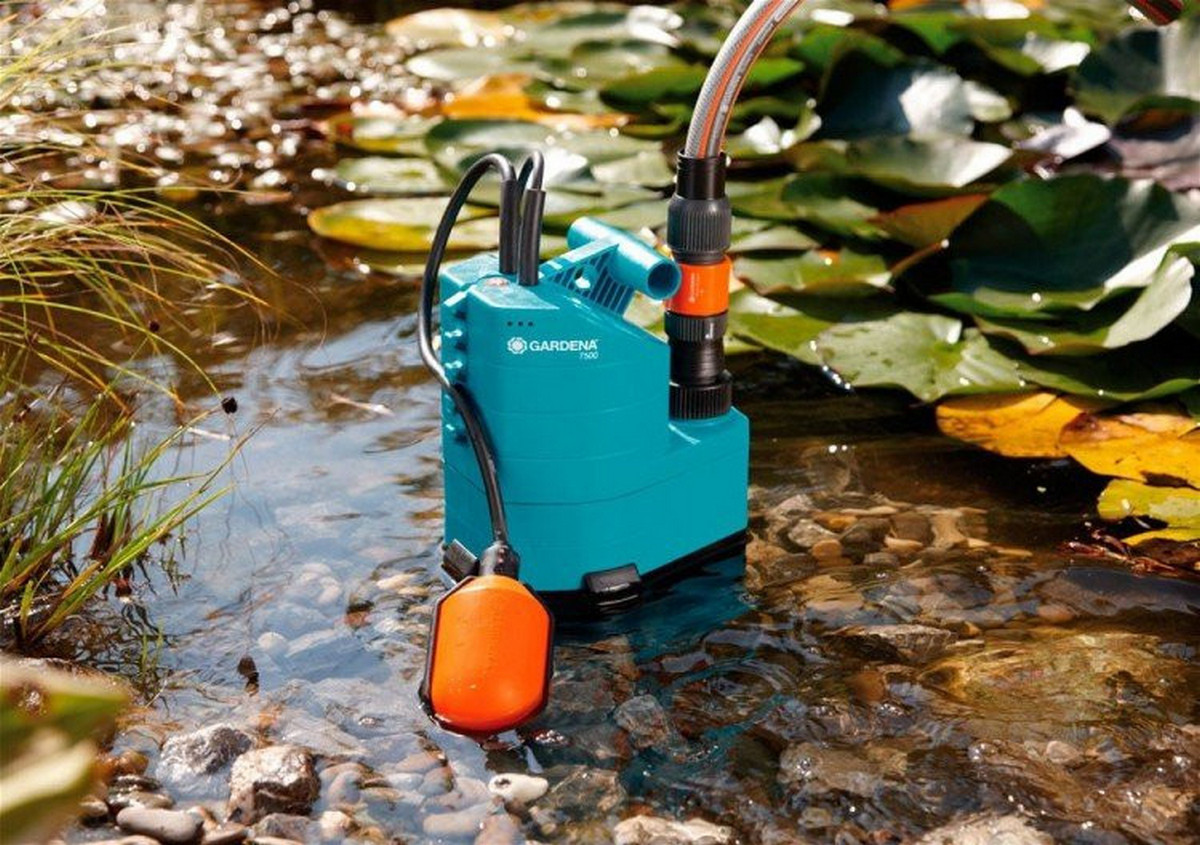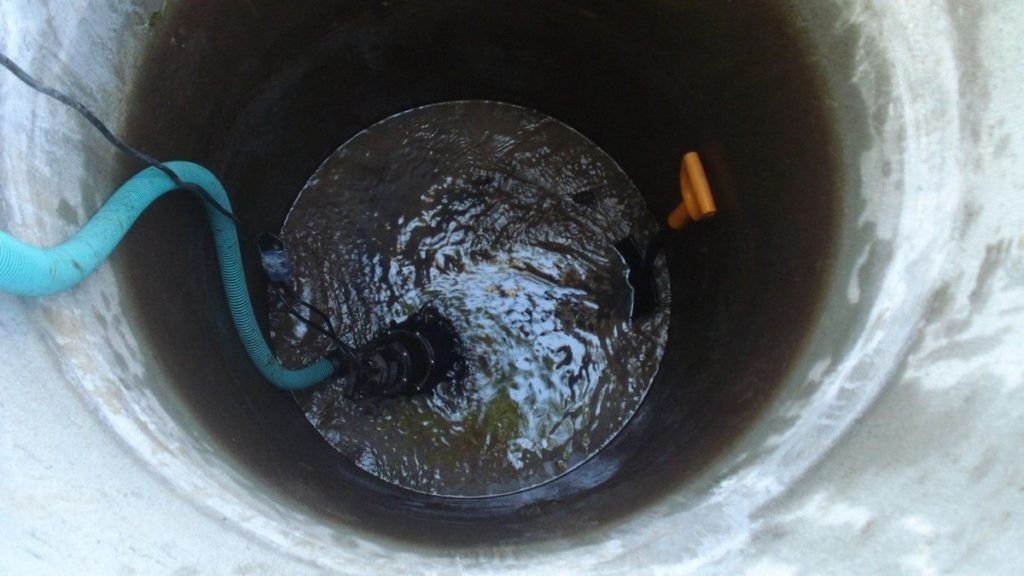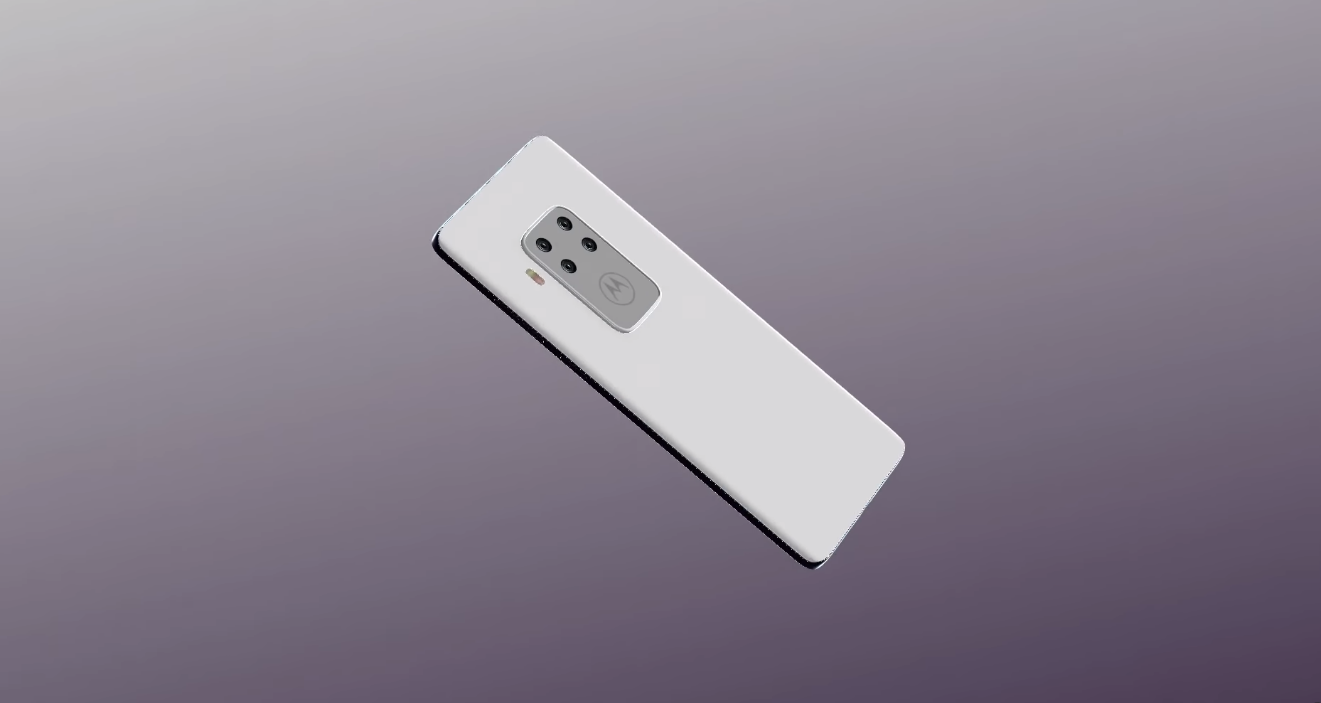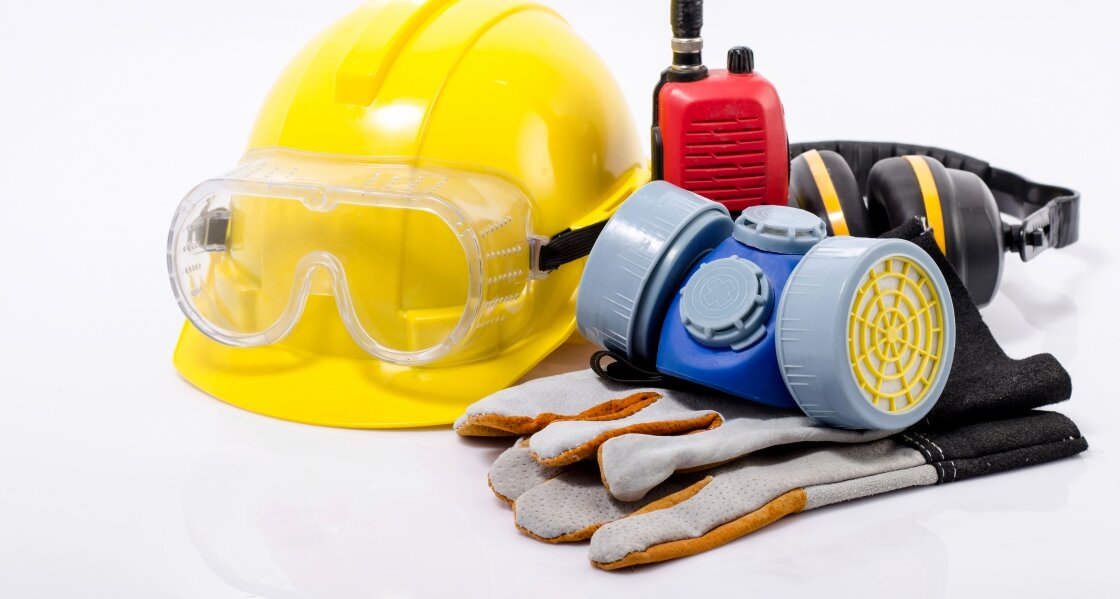Ranking of the best pumps for wells for 2025

If there is no centralized water supply system in a summer cottage or in a country house, then, as a rule, either a well or a well will be a source of drinking water. Naturally, water from the source can also be drawn manually, but to facilitate the process of lifting and supplying water to the consumer, it is better to use a special well pump with a hydraulic accumulator or a storage tank.

Content [Hide]
- 1 Pumps for wells - deep and surface
- 2 Specifications required for the installation of pumping equipment
- 3 Required technical parameters for the pump
- 4 The main types of submersible pumps for a well
- 5 Features of the use and installation of deep pumps
- 6 Helpful Hints for Operation
- 7 Selection Guide
- 8 Ranking of the best pumps for wells for 2025
- 9 Instead of an epilogue
Pumps for wells - deep and surface
This criterion for equipment should depend on the depth of the source. Today, there are two popular types of aggregates in question:
- Surface;
- Submersible (they are deep).
Surface action devices can be used both separately and be integrated into the complex of the pumping station. They are located near the well shaft on a surface base or placed in a caisson (special recess). Due to the fact that these devices have a small suction depth (no more than 8 meters), they are used in shallow sources or in open wells. This equipment is mainly used seasonally.
Submersible pumps are placed below the water table and are used for full water supply. They are held in working position by a special cable, which is fixed outside the well shaft. The pumped liquid is fed through the lifting pipeline either to the storage tank or to the hydraulic accumulator.For the purpose of safe operation, such a pumping system is provided with automation, which is able to maintain the required pressure in the water main, while protecting the unit from “dry running” and unnecessary overloads. Submersible samples can be used all year round.
In a mine with a depth of 10-15 meters, the pump can be lowered on a reliable cable and fixed on a special pontoon. During the pumping of water in an amount that exceeds the well debit parameter, the device will automatically turn off. In order not to suck in the sludge masses, the submersible pump, namely the pipe receiving it, must be installed at a distance of at least 1 meter from the well bottom.
Due to the fact that the water column in the well is not very high and rarely exceeds 2 meters, it is preferable to use special deep well pumps directly designed for wells. Such devices are more designed for such sources and may not lose their performance if a certain amount of silt or sand gets into their line.
IMPORTANT! Depth models specifically designed for deep wells are not desirable for standard wells.
Specifications required for the installation of pumping equipment
Properly selected equipment for pumping water should fully provide the necessary pressure and fluid flow for the correct supply of a dwelling or site. The device, the technical characteristics of which will be selected with a strong overestimation, can become very expensive in operation and generally not meet the tasks at hand. At the same time, the unit, whose parameters will be less than required, will begin to work at the power limit, which will inevitably lead to its rapid wear.To use equipment with proper characteristics, it is necessary to determine in advance the future conditions for its operation:
- Depth of a well or well - the working distance from the surface of the earth to the bottom of the source;
- Permanent (statistical) water level - the distance to the water surface from the axis of the suction pipe of the unit;
- Dynamic level - i.e. the level that the well can maintain during the pumping of water (this value means the productivity of the source per unit of time, the so-called "debit");
- The horizontal length of the section of the water supply system - i.e. the length of the transmission line;
- The height of the pipeline - it is measured to the top point of the water intake.
IMPORTANT! It is also worth determining the preferred method of supplying fluid to the system - by a hydraulic accumulator or by means of hydrostatic pressure.
Required technical parameters for the pump
As a rule, all technical characteristics of the pump are fully described in the accompanying documents. However, the following parameters are considered the most important:
- Head - this indicator sets the pressure difference between the outlet and inlet pipes of the device;
- Proper suction head is the maximum vertical distance from the water level in the mine to the suction element of the pumping equipment, at which cavitation (formation of bubbles or voids in the liquid medium) does not occur;
- Feeding capacity - usually refers to the volume of water supplied per unit of time. The parameter may depend on the speed of the working rotor and the general hydraulic characteristics of the entire system. This value should be correlated with the flow rate of the source.
The main types of submersible pumps for a well
Due to the fact that for the intake of water (drinking) from a well or well, submersible models are considered the best, it is necessary to consider in more detail their principle of operation and popular types. On this basis, they are classified into 4 types: vibration and centrifugal, vortex and screw.
Vibration Models
They belong to the budget segment of the equipment in question and in terms of their technical part they are not particularly difficult. They have approximately the same appearance and general device, despite their wide range on the market. The difference between them will be only in the manufacturing companies and, accordingly, in price. Their device is simple, it completely excludes mechanisms rotating or rubbing against each other, which makes vibration samples relatively cheap.
However, they have significant disadvantages:
- The main disadvantage is the vibration that is created during the workflow. It is she who causes strong waves that are transmitted to the water surface (and to the general water column). These waves can cause significant turbidity of the water substance, can eventually destroy the walls of the mine, can contribute to siltation of the bottom, and also lift clay from the bottom, feeding it into the bearing main. Vibrating versions "do not like" liquid with fragmentary pollution - fragments of dirt significantly interfere with the tight contact of the valves;
- Structurally, the vibration samples in the system do not have any automatic shutdown at idle or water level sensors. Such a situation will require the purchase of appropriate equipment, which will clearly increase the cost of well water supply;
- During operation, the described pump creates too much noise that can be clearly heard, despite the fact that the device itself is deep under water.
Nevertheless, vibration models are capable of supplying water with good pressure, however, they cannot boast of special durability and performance. Thus, vibration models are a budget solution that is best used in the country only in the summer. From this it is clear that they cannot be considered as a serious water supply device for a country house on an ongoing basis.
Screw models
Such samples of pumping equipment are quite rare, but they still deserve separate consideration. Screw devices pump water in a special way, based on the principle of rotation of the “Archimedes screw”, i.e. on the principle of operation of a conventional meat grinder.
Their undoubted advantages include:
- The ability to maintain a consistently high pressure;
- The absence of any unnecessary vibrations during operation and silent operation;
- They are the most unpretentious in terms of the quality of the water taken from all the deep models.
However, they also have a number of disadvantages that may impose restrictions on the scope of their use:
- They have very low performance, which, however, does not affect the strong pressure;
- They have the lowest efficiency due to the fact that most of the working units constantly rub against each other;
- Screw units on a permanent basis require maintenance and preventive operations, in which it is constantly necessary to replace worn-out elements;
- Due to the unpretentiousness to the quality of the liquid, screw units are better used for the intake of technical water than drinking water.
Centrifugal models
These pumping units have gained wide popularity, because they are able to fully meet most of the requirements for drinking water intake technology. They have the highest performance and can lift water from great depths, while their performance does not drop at all. Also, during their work, they produce a minimum of vibration and extraneous noise. Centrifugal pumps have many model variations that differ in various characteristics - from the generated pressure force and overall performance to the number and diameter of working chambers. Due to the variety of technical designs, it is quite possible to choose a unit that is fully consistent with future tasks. Their only drawback is a rather complicated device (it is better to entrust repair and maintenance to a specialist) and the overall high cost.
Vortex models
According to their design and principle of operation, they are very similar to centrifugal apparatus. The difference between them will consist only in the special design of the working chamber, which is somewhat different in shape for vortex ones in comparison with centrifugal ones. It is this difference, after all, that significantly increases the operational capabilities of the first pumps. At the same time, vortex devices have a lower price, since their design is somewhat simpler and has fewer working elements. This factor is the main advantage and difference. Also, in comparison with centrifugal, vortex ones produce even less noise and vibration. In addition, they are not afraid of air gaps (cavitations) entering the working chamber when pumping liquid.However, their significant disadvantage is that even a small amount of solid impurities can impede the overall performance of the device, and the water purity factor will be very acute for the life of the equipment, if the source reservoir does not differ.
Features of the use and installation of deep pumps
In principle, a submersible pump can be lowered into the source to its full depth, as well as it will be sufficient to submerge only its lower part with suction holes. Full immersion is considered justified only if there are significant fluctuations in the water level in the source well. This can happen, for example, during a dry period, when most wells become shallow. It is in such situations that it is required to completely lower the body into the liquid column. However, at the same time, it is necessary to ensure that, as a result of vibrations, the body does not accidentally end up above the surface of the water mirror, because in this case it will work “dry”, and not all devices can automatically turn off when such a critical situation occurs. For periodically shallowing sources, it is preferable to use powerful pumps and immediately lower them to the maximum possible depth.
The installation process itself is very simple. The body of the apparatus is lowered into the well on a special cable to the desired level, where it is fixed, after which the pump is connected to the mains. At the same time, it is necessary to ensure that the water pipe is not bent. If it is not possible to constantly monitor this, then it is better to use reinforced hoses that do not twist into vibration rings and are able to withstand increased pressure.
Helpful Hints for Operation
In order for the pumping equipment to serve as long as possible, you need to follow a few simple tips:
- It is necessary to keep the source well clean - for this you need to periodically drain it and clean the bottom and walls of silt and dirt.
- Do not use powerful equipment on sources that are not intended for this - the equipment must correspond to the source, according to previously made calculations, which will greatly save money.
- Water filters need to be cleaned regularly - this procedure itself is simple, you just need to remove the filter, rinse it with running water and put it back. A clean filter will significantly extend the overall life of the unit and will keep the pumped liquid clean at the proper level.
- It is necessary to install a check valve in the outgoing hose - this will reduce the negative impact of water hammer that occurs when the tap is opened for water intake, and also protect the internal components of the pump from early breakdowns.
- The pump unit must be used strictly for its intended purpose - if it is used exclusively for pumping drinking water, then it should not be used for drainage / cleaning purposes either. Otherwise, a speedy breakdown is guaranteed.
Selection Guide
Just before buying the unit, it is necessary to make technical calculations so as not to accidentally buy either a too powerful or too weak device. At the same time, you should decide on the range of tasks that the pump will constantly perform:
- Direct purpose - water intake for technical needs (watering the garden, car wash) or drinking water supply;
- The maximum depth of lowering the apparatus - here one should take into account the debit of the water layer, coupled with the possibility of fluctuations in the water level, as well as the possibility of full-weight shallowing of the source well;
- The purity of the water in the source well - the type of pump will depend on this factor according to the principle of its operation (the cleaner the source, the more demanding the model can be used).
It is always worth remembering that when buying a well pump, you need to choose a device that has some margin in terms of lifting level and overall performance. Such a margin with respect to technical parameters is needed due to the fact that almost any part of the water supply system can form hydraulic resistance, which is quite difficult to take into account when making preliminary calculations. Thus, using a pump that is slightly larger than the calculated parameters, it is possible with a greater degree of probability to ensure its efficient operation.
Ranking of the best pumps for wells for 2025
Budget segment
3rd place: "PATRIOT VP-10 (300 W)"
votes 0
This apparatus belongs to deep samples with a vibrational principle of operation. It is quite possible to use it on shallow well sources (and even on natural reservoirs), with an immersion depth of not more than 7 meters. With this limiting distance, a proper head of 30 meters will be maintained. Nevertheless, technically, immersion can reach both 10 and 15 meters, but at the same time, the pressure will be halved. The design provides protection against overheating and a stop at a "dry run". The case is made of stainless steel, so the service life is slightly increased. The recommended retail price is 1,500 rubles.

- Ideal for garden irrigation.
- Possibility of deviation from the indicators of nominal immersion in the direction of increase;
- Small power consumption.
- Short network cable.
2nd place: "KARCHER BP 1 Barrel (400 W)"
votes 0
This sample can be considered as an excellent alternative to traditional irrigation methods. The beds can be watered with settled warm water (including rainwater), which is especially important for heat-loving crops with a fragile root system. The pump has a special flexible mount that securely holds it on the rim of the well shaft and is compatible with any container. The set includes a float switch that allows you to control the water supply and protects the mechanism from running dry. The model is capable of self-cooling during prolonged operation. The established cost for retail chains is 6,000 rubles.

Demonstration of the operation of the pump - in the video:
- Lightweight and durable plastic housing;
- Low operating noise;
- Great solution for watering.
- The bottom filter may have some play.
1st place: "JILEX Water cannon PROF 55/35 (460 W)"
votes 1
This model is adapted to work in both artificial and natural sources with sufficient water level. Works great with sandy wells, and a special filter for bottom sediments does not let through fragments larger than 1.5 mm. Ideal for both irrigation and drinking water. During operation, it does not produce much noise and is characterized by efficiency in terms of energy consumption. The maximum head is 35 meters, and immersion is possible up to 30 meters. The case is made of stainless steel and resistant to mechanical stress.The set includes a 10 meter power cable. The recommended cost for retail chains is 9,300 rubles.

Video review of the pump:
- Long electric cable;
- Powerful pressure;
- Good filter.
- Not detected.
Middle price segment
3rd place: "JILEKS Water cannon PROF 55/50 A df (600 W)"
votes 0
This sample is perfect for organizing the supply of drinking water to a private house or country cottage. The maximum diving depth can be up to 30 meters. With the help of a special float switch, the device can turn itself off if there is a difference in the water level, which will not depend on the type of reservoir (natural or artificial). The maximum possible head is 50 meters. The unit can work with clean liquids, the clogging of which does not exceed 2 mm fragmentation. To improve the quality of purification of the supplied water, it is possible to install an additional bottom filter. All components of the device do not have a negative impact on the pumped liquid. There is protection against "dry running" and overheating. Due to the presence of a double seal in the housing, the service life is increased. The design has special eyes for threading the retaining cable. The set price for retail stores is 14,500 rubles.

Video submersible pump:
- Extended service life;
- Rugged housing;
- Powerful pressure;
- Adequate cost.
- Not detected.
2nd place: "Aquario ASP2-25-100WA (620 W)"
votes 0
This device belongs to vertical-based deep models and can pump water from wells, wells and other open sources with a shaft diameter of at least 15 centimeters. Recommended for use in private water supply systems. It can dive to a maximum of 15 meters and at the same time give out a pressure of 40 meters. It has an excellent filter and does not allow fractions larger than 0.5 mm to pass through. The body is made of stainless steel, like other main elements of the motor. It does not have its own self-cooling system, but during intensive work, cooling is carried out through interaction with the pumped liquid. The float switch will be able to protect the structure from idling. You can use the operating mode with partial body immersion. The recommended cost for retail chains is 16,200 rubles.

Detailed video review of this pump:
- Low noise;
- Reliable construction;
- Electrical cable 20 meters.
- Not recommended for deep wells.
1st place: "Aquario ASP2-40-100WA (750 W)"
votes 0
A reliable and high-quality pump option, specially oriented to domestic water supply systems. Able to pump clean cold water (and hot - up to 35 degrees Celsius) from various sources - natural and artificial. It can dive to a depth of 15 meters, while the maximum pressure will be 70 meters. During an hour of operation, it conducts up to 30 launches, pumping out about 3 cubic meters of water. It makes almost no noise during operation. The body and main elements are made of "stainless steel" and are resistant to premature wear.The network cable has a length of 25 meters, and for a reliable supply of electricity, it is additionally equipped with a stabilizer. The recommended cost for retail chains is 18,000 rubles.

- All protection systems are available;
- Long electric cable with voltage stabilizer;
- Excellent pressure.
- Not detected.
Premium class
2nd place: "DAB DIVERTRON 1200 M (1100 W)"
votes 0
Such a device is able to supply water to a private household even from a very deep well. Within a minute, he gains 10 liters and can lift them to a height of 45 meters. If you use it at a shallow depth (no more than 10 meters), then the pressure increases to 80 meters. All processes are mostly carried out automatically, thanks to built-in flow and pressure sensors. It can provide high stability even during fluctuations in water consumption, which is achieved due to the built-in hydraulic accumulator. Does not require an additional source of cooling during intensive work. The power cable included in the kit has a voltage stabilizer. The body is made of durable environmentally friendly plastic and does not damage the pumped liquid. The recommended cost for retail store chains is 30,000 rubles.

Video on installing a water supply system from a well using a Dab Divertron pump:
- Good work at great depths;
- Reliable automation;
- Eco-friendly body.
- High price.
1st place: "Grundfos SBA 3-35 A"
votes 0
An excellent representative of pumping equipment from the world famous Italian manufacturer.Perfect for pumping clean water for domestic water supply, although it is also possible to take liquids for irrigation from rain tanks. Of significant interest is the feature due to which this unit can be used as an additional device to increase the pressure in an existing water supply. The design is equipped with a float switch, which allows you to control water level fluctuations and enable protection against "dry running". There is also a protection against thermal overload, which, in case of extreme heating of the working units, stops the operation of the device. Upon normalization of the operating temperature of the nodes, the entire system will automatically restart and continue to work. The maximum pressure can reach 35 meters. The recommended retail price is 33,000 rubles.

- Numerous automatic options;
- "Smart" protection system;
- Sufficient performance.
- High price.
Instead of an epilogue
The analysis of the market of the devices under consideration found that most of the popular devices in the budget and middle segments are poorly designed for pumping drinking water. They can either be used only for irrigation, or you will need to buy special bottom filters for them. If we talk about specialized models for home water supply, then their prices “bite” very much and start in the region of 25,000 rubles.
new entries
Categories
Useful
Popular Articles
-

Top ranking of the best and cheapest scooters up to 50cc in 2025
Views: 131651 -

Rating of the best soundproofing materials for an apartment in 2025
Views: 127690 -

Rating of cheap analogues of expensive medicines for flu and colds for 2025
Views: 124519 -

The best men's sneakers in 2025
Views: 124033 -

The Best Complex Vitamins in 2025
Views: 121939 -

Top ranking of the best smartwatches 2025 - price-quality ratio
Views: 114980 -

The best paint for gray hair - top rating 2025
Views: 113395 -

Ranking of the best wood paints for interior work in 2025
Views: 110318 -

Rating of the best spinning reels in 2025
Views: 105329 -

Ranking of the best sex dolls for men for 2025
Views: 104366 -

Ranking of the best action cameras from China in 2025
Views: 102215 -

The most effective calcium preparations for adults and children in 2025
Views: 102011









